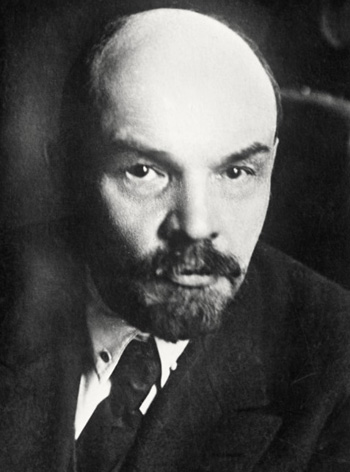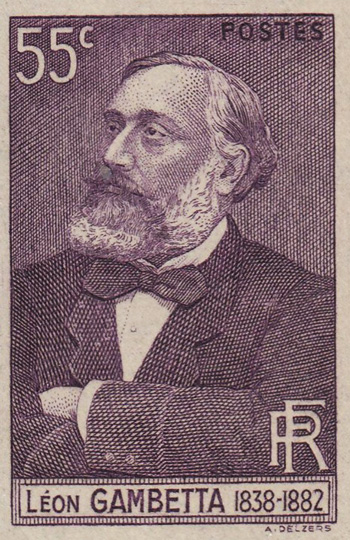Asuntos Tradicionalistas
 |
 |
 |
 |
 |
 |
 |
Misa de Diálogo - CXVIII
La carga fantasma del 'clericalismo'
Es un asunto de registro histórico que el eslogan fue un elemento básico de la Revolución Conciliar en la Iglesia, como lo había sido de las principales revoluciones políticas del mundo moderno, y se usó en todos estos casos como una forma de control del pensamiento con el fin de “reciclar” la mente de las personas y transformar sus creencias.
Pocas personas hoy en día se dan cuenta de que existen estrechos paralelismos entre los métodos verbales de persuasión utilizados por los líderes del Partido de los regímenes comunistas y el tipo de lenguaje que caracterizó los decretos del Vaticano II y los documentos posconciliares que emanan del Vaticano y las Conferencias Episcopales.
En ambos casos, la selección de palabras estuvo controlada desde arriba por líderes que supieron inculcar su cosmovisión ideológica en la mente de la gente. El Politburó tanto del antiguo régimen soviético como del Partido Comunista Chino produjeron una serie de consignas revolucionarias para que la gente las absorbiera y las repitiera.
Por su parte, la revolución lingüística del Vaticano II fue también un proceso de arriba hacia abajo controlado centralmente de adoctrinamiento de las masas a través de consignas. La noble tradición de la Iglesia de la expresión escolástica fue abandonada y reemplazada por una jerga políticamente correcta formulada, utilizando lemas ideados por las diversas Comisiones y Comités de la burocracia del Vaticano. El paisaje eclesiástico está plagado de eslóganes cargados que se han abierto camino en el uso popular mediante el uso de la fuerza bruta.
Nuevos vocabularios, p. se introdujeron la “participación activa” de los laicos, la “Misa comunitaria”, la “llamada universal a la santidad”, las “comunidades de fe”, la “renovación carismática” y el “testimonio profético”; términos más antiguos como “sacerdocio común” y “diálogo” recibieron nuevos significados revolucionarios; palabras y frases como la transubstanciación o el Reino de Cristo Rey sobre la sociedad fueron consideradas políticamente incorrectas, fueron suprimidas y sustituidas por lemas “ecuménicamente correctos” como “celebración eucarística”, “libertad de conciencia” o la “dignidad del hombre”. ”
 “Servir al pueblo”, quizás el eslogan más famoso del Partido Comunista Chino, encontró una rápida aceptación en la Iglesia de la década de 1960. Se convirtió en el leitmotiv de los documentos conciliares y posconciliares hasta el punto de eclipsar el deber primordial de servir primero a Dios. “Servir a la comunidad” ahora se considera el principio y el fin del sacerdocio ministerial, y ahora es el tema dominante del “Camino Sinodal” del Papa Francisco.
“Servir al pueblo”, quizás el eslogan más famoso del Partido Comunista Chino, encontró una rápida aceptación en la Iglesia de la década de 1960. Se convirtió en el leitmotiv de los documentos conciliares y posconciliares hasta el punto de eclipsar el deber primordial de servir primero a Dios. “Servir a la comunidad” ahora se considera el principio y el fin del sacerdocio ministerial, y ahora es el tema dominante del “Camino Sinodal” del Papa Francisco.
Incluso el eslogan de la "pirámide invertida", que debe su origen a los trastornos de los métodos ruso y chino de transformar la sociedad, se utilizó repetidamente para reforzar un mensaje revolucionario para cambio en la Constitución de la Iglesia. El concepto clave aquí es la lucha por el empoderamiento de los laicos, lo que implica una transferencia continua del poder eclesiástico de la Jerarquía a los activistas laicos en todas las áreas de la vida de la Iglesia.
Aprendiendo de Lenin
Toda la evidencia indica que las estrategias verbales del comunismo, que una vez caracterizaron la propaganda soviética y la ideología de la Revolución Cultural China, fueron redesplegadas para promover los objetivos del Vaticano II. Nadie puede negar que tienen al menos esto en común: todos fueron concebidos en la tradición marxista-leninista de crear una revolución permanente para combatir y destruir las estructuras monárquicas.
 Este fue precisamente el objetivo de los progresistas en el Concilio Vaticano II. Su lema de “pirámide invertida” era un llamado a una revolución en la Constitución de la Iglesia siguiendo el modelo de las ideas de Lenin, quien escribió las siguientes líneas dos años después de la Revolución de Octubre de 1917:
Este fue precisamente el objetivo de los progresistas en el Concilio Vaticano II. Su lema de “pirámide invertida” era un llamado a una revolución en la Constitución de la Iglesia siguiendo el modelo de las ideas de Lenin, quien escribió las siguientes líneas dos años después de la Revolución de Octubre de 1917:
“La ley fundamental de la revolución es la siguiente: para que se produzca una revolución no basta que las masas explotadas y oprimidas se den cuenta de la imposibilidad de vivir a la antigua usanza; para que se produzca una revolución es esencial que los explotadores no puedan vivir y gobernar a la antigua usanza. Sólo cuando las clases bajas no quieren vivir como antes y las clases altas no pueden seguir como antes, puede triunfar la revolución” (1).
Podemos escuchar ecos del leninismo en la Iglesia Católica desde el Concilio, que se aseguró de que la Jerarquía, el órgano gobernante que tiene el poder de órdenes y jurisdicción, ya no “viviría y gobernaría a la antigua”: las tiaras están fuera, la lucha de clases está de moda. Nadie, y menos el Papa, puede gobernar “a la antigua”.
Abundan las pruebas documentales que muestran cómo el Vaticano II logró su propia revolución “comunista” mediante el uso de consignas desplegadas durante y después del Concilio para montar un asalto al sacerdocio sacramental y disminuir su poder y eficacia en la Iglesia. Sin duda, Lenin habría aprobado dejar de lado el sistema de gobierno de dos niveles de la Iglesia por parte de gobernantes jerárquicos que ejercen poder espiritual sobre sus súbditos (vistos por los progresistas como las "masas oprimidas").
Si tuviéramos que elegir una consigna que resumiera todas las demás, sería “eliminar el clericalismo”, una frase que, aunque aparentemente buena en sí misma, ha sido subvertida para adaptarse a los propósitos de la Revolución. (Esto también es parte de la estrategia lingüística que manipula la mente para que acepte un nuevo significado bajo el camuflaje de la vieja fórmula).
¿Cuál es el significado de 'clericalismo'?
 No existe un consenso claro sobre el significado de esta palabra, ya que varía según la intención en la mente del hablante o escritor, lo que nos deja con la duda de si es un término real o útil. El hecho de que “Clericalismo” siempre se haya utilizado en un sentido peyorativo en relación con el poder, el privilegio y el prestigio clerical es muy significativo. Su origen se atribuye al republicano y masón francés Léon Gambetta, quien popularizó el mantra “le cléricalisme, voilà l’ennemi (“el clericalismo es el enemigo”) en 1877.
No existe un consenso claro sobre el significado de esta palabra, ya que varía según la intención en la mente del hablante o escritor, lo que nos deja con la duda de si es un término real o útil. El hecho de que “Clericalismo” siempre se haya utilizado en un sentido peyorativo en relación con el poder, el privilegio y el prestigio clerical es muy significativo. Su origen se atribuye al republicano y masón francés Léon Gambetta, quien popularizó el mantra “le cléricalisme, voilà l’ennemi (“el clericalismo es el enemigo”) en 1877.
Esta paternidad esencialmente la marca como un tropo anticlerical; se usó solo con el propósito de avivar el resentimiento y la hostilidad hacia el clero, especialmente el Papa, y con la intención de desmantelar las estructuras institucionales de la Iglesia.
Es aún más significativo que la palabra “clericalismo” – como antes “participación activa” (2) – no estaba en uso en la Iglesia antes del Concilio Vaticano II. De repente, la gente estaba viendo ejemplos de él apareciendo por todas partes y se apresuraban a deshacerse de él, aunque no había sido claramente identificado. Y los sacerdotes que simplemente continuaban en sus roles tradicionales y eran completamente inocentes de cualquier delito menor, fueron declarados culpables del "pecado", "crimen" o "enfermedad" del "clericalismo".
De hecho, bajo el significado cada vez mayor del término, no hay posiciones tradicionales que no sean marcadas como “clericalismo” por los reformadores. El campo ha quedado completamente abierto a la interpretación de aquellos fuera de la Iglesia que resienten las afirmaciones históricas de la Iglesia, así como de aquellos dentro de ella que envidian al clero su estatus superior y desean liberarse de su autoridad espiritual.
Antes de continuar con los detalles de lo que constituye el “clericalismo” en la mente de los reformadores, aclaremos la naturaleza de la bestia que estamos a punto de examinar. Estamos ante la nueva eclesiología del Vaticano II que revolucionó –en el sentido de poner patas arriba– la naturaleza monárquica de la Iglesia, sustituyéndola por un “ministerio de todos los creyentes” (sin preocuparse demasiado por lo que realmente creían).
En los próximos artículos, será útil tener en cuenta que los obispos en el Concilio que llamaron al rechazo del primer esquema sobre la Constitución de la Iglesia lo hicieron precisamente porque apoyaba la estructura monárquica de la Iglesia que consideraban inaceptable. Así que se embarcaron en una campaña de difamación en su contra, denunciando su estructura piramidal de dos niveles como una forma de “clericalismo”.
Esto revela que la consigna, recién reinventada con el propósito de derrocar la Constitución de la Iglesia, estaba cargada de connotaciones negativas contra el estamento clerical. Abordaremos ahora la cuestión de si las motivaciones y actitudes que los progresistas atribuyen al clero son reales o meramente percibidas.
Continuará ...
Pocas personas hoy en día se dan cuenta de que existen estrechos paralelismos entre los métodos verbales de persuasión utilizados por los líderes del Partido de los regímenes comunistas y el tipo de lenguaje que caracterizó los decretos del Vaticano II y los documentos posconciliares que emanan del Vaticano y las Conferencias Episcopales.
En ambos casos, la selección de palabras estuvo controlada desde arriba por líderes que supieron inculcar su cosmovisión ideológica en la mente de la gente. El Politburó tanto del antiguo régimen soviético como del Partido Comunista Chino produjeron una serie de consignas revolucionarias para que la gente las absorbiera y las repitiera.
Por su parte, la revolución lingüística del Vaticano II fue también un proceso de arriba hacia abajo controlado centralmente de adoctrinamiento de las masas a través de consignas. La noble tradición de la Iglesia de la expresión escolástica fue abandonada y reemplazada por una jerga políticamente correcta formulada, utilizando lemas ideados por las diversas Comisiones y Comités de la burocracia del Vaticano. El paisaje eclesiástico está plagado de eslóganes cargados que se han abierto camino en el uso popular mediante el uso de la fuerza bruta.
Nuevos vocabularios, p. se introdujeron la “participación activa” de los laicos, la “Misa comunitaria”, la “llamada universal a la santidad”, las “comunidades de fe”, la “renovación carismática” y el “testimonio profético”; términos más antiguos como “sacerdocio común” y “diálogo” recibieron nuevos significados revolucionarios; palabras y frases como la transubstanciación o el Reino de Cristo Rey sobre la sociedad fueron consideradas políticamente incorrectas, fueron suprimidas y sustituidas por lemas “ecuménicamente correctos” como “celebración eucarística”, “libertad de conciencia” o la “dignidad del hombre”. ”

La Revolución Conciliar adoptó la verborrea del Partido Comunista Chino: Servir al Pueblo
Incluso el eslogan de la "pirámide invertida", que debe su origen a los trastornos de los métodos ruso y chino de transformar la sociedad, se utilizó repetidamente para reforzar un mensaje revolucionario para cambio en la Constitución de la Iglesia. El concepto clave aquí es la lucha por el empoderamiento de los laicos, lo que implica una transferencia continua del poder eclesiástico de la Jerarquía a los activistas laicos en todas las áreas de la vida de la Iglesia.
Aprendiendo de Lenin
Toda la evidencia indica que las estrategias verbales del comunismo, que una vez caracterizaron la propaganda soviética y la ideología de la Revolución Cultural China, fueron redesplegadas para promover los objetivos del Vaticano II. Nadie puede negar que tienen al menos esto en común: todos fueron concebidos en la tradición marxista-leninista de crear una revolución permanente para combatir y destruir las estructuras monárquicas.

Lenin: “Los explotadores no deberían poder vivir y gobernar a la antigua usanza”
“La ley fundamental de la revolución es la siguiente: para que se produzca una revolución no basta que las masas explotadas y oprimidas se den cuenta de la imposibilidad de vivir a la antigua usanza; para que se produzca una revolución es esencial que los explotadores no puedan vivir y gobernar a la antigua usanza. Sólo cuando las clases bajas no quieren vivir como antes y las clases altas no pueden seguir como antes, puede triunfar la revolución” (1).
Podemos escuchar ecos del leninismo en la Iglesia Católica desde el Concilio, que se aseguró de que la Jerarquía, el órgano gobernante que tiene el poder de órdenes y jurisdicción, ya no “viviría y gobernaría a la antigua”: las tiaras están fuera, la lucha de clases está de moda. Nadie, y menos el Papa, puede gobernar “a la antigua”.
Abundan las pruebas documentales que muestran cómo el Vaticano II logró su propia revolución “comunista” mediante el uso de consignas desplegadas durante y después del Concilio para montar un asalto al sacerdocio sacramental y disminuir su poder y eficacia en la Iglesia. Sin duda, Lenin habría aprobado dejar de lado el sistema de gobierno de dos niveles de la Iglesia por parte de gobernantes jerárquicos que ejercen poder espiritual sobre sus súbditos (vistos por los progresistas como las "masas oprimidas").
Si tuviéramos que elegir una consigna que resumiera todas las demás, sería “eliminar el clericalismo”, una frase que, aunque aparentemente buena en sí misma, ha sido subvertida para adaptarse a los propósitos de la Revolución. (Esto también es parte de la estrategia lingüística que manipula la mente para que acepte un nuevo significado bajo el camuflaje de la vieja fórmula).
¿Cuál es el significado de 'clericalismo'?

Gambetta apuntó al clericalismo como el principal enemigo
de la masonería francesa
Esta paternidad esencialmente la marca como un tropo anticlerical; se usó solo con el propósito de avivar el resentimiento y la hostilidad hacia el clero, especialmente el Papa, y con la intención de desmantelar las estructuras institucionales de la Iglesia.
Es aún más significativo que la palabra “clericalismo” – como antes “participación activa” (2) – no estaba en uso en la Iglesia antes del Concilio Vaticano II. De repente, la gente estaba viendo ejemplos de él apareciendo por todas partes y se apresuraban a deshacerse de él, aunque no había sido claramente identificado. Y los sacerdotes que simplemente continuaban en sus roles tradicionales y eran completamente inocentes de cualquier delito menor, fueron declarados culpables del "pecado", "crimen" o "enfermedad" del "clericalismo".
De hecho, bajo el significado cada vez mayor del término, no hay posiciones tradicionales que no sean marcadas como “clericalismo” por los reformadores. El campo ha quedado completamente abierto a la interpretación de aquellos fuera de la Iglesia que resienten las afirmaciones históricas de la Iglesia, así como de aquellos dentro de ella que envidian al clero su estatus superior y desean liberarse de su autoridad espiritual.
Antes de continuar con los detalles de lo que constituye el “clericalismo” en la mente de los reformadores, aclaremos la naturaleza de la bestia que estamos a punto de examinar. Estamos ante la nueva eclesiología del Vaticano II que revolucionó –en el sentido de poner patas arriba– la naturaleza monárquica de la Iglesia, sustituyéndola por un “ministerio de todos los creyentes” (sin preocuparse demasiado por lo que realmente creían).
En los próximos artículos, será útil tener en cuenta que los obispos en el Concilio que llamaron al rechazo del primer esquema sobre la Constitución de la Iglesia lo hicieron precisamente porque apoyaba la estructura monárquica de la Iglesia que consideraban inaceptable. Así que se embarcaron en una campaña de difamación en su contra, denunciando su estructura piramidal de dos niveles como una forma de “clericalismo”.
Esto revela que la consigna, recién reinventada con el propósito de derrocar la Constitución de la Iglesia, estaba cargada de connotaciones negativas contra el estamento clerical. Abordaremos ahora la cuestión de si las motivaciones y actitudes que los progresistas atribuyen al clero son reales o meramente percibidas.
Continuará ...
- Vladimir Ilich Lenin, Sobre la cultura y la revolución cultural, Moscú: Progress Publishers, 1970, p. 94.
- Para un análisis detallado de la historia de la "participación activa" como lema litúrgico, consulte el Volumen 1.
Publicado el 13 de agosto de 2022
______________________
______________________
 Volume I |
 Volume II |
 Volume III |
 Volume IV |
 Volume V |
 Volume VI |
 Volume VII |
 Volume VIII |
 Volume IX |
 Volume X |
 Volume XI |
 Special Edition |



